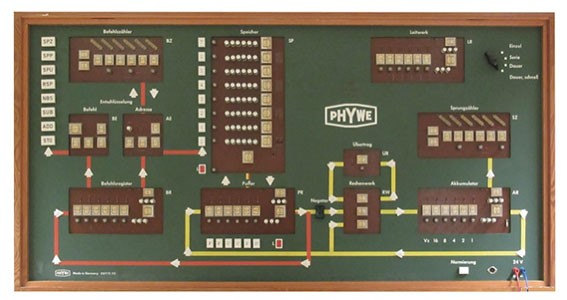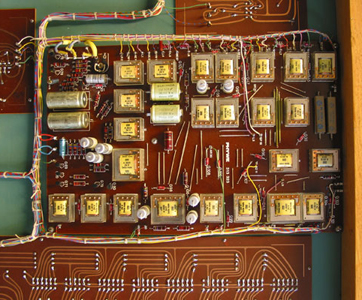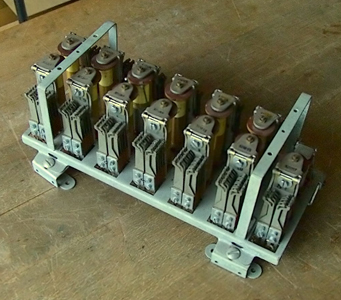PHYWE instructional computer
UvA Computer Museum catalogue nr 01.44

This is the front panel (width 165 cm) of our PHYWE
Program-Controlled Computer (about 1968), a complete computer with
8 6-bit memory words, 8 instructions, a 1-bit processor and a
complement of registers.
The computer uses electromagnetic relays for all of its gates. These relays are clearly visible as the rectangular boxes in the picture below, showing part of the inside of the machine.
The system clock runs at about 3 steps per second; a program can also be stepped through manually. A lot of small incandescant lamps show what is happening.
Programs are entered by means of a set of 6 push-buttons (lower middle part of the panel).
This movie
shows the execution of a three-instruction program. The first two instructions are identical <001 101>, each adding the contents <12d> of memory address <5d> to the accumulator (lower right). The third instruction is <000 000> 'stop'. The lamps to the extreme left correspond to the instruction set: the lower lamp lights if STOP, instruction <000 000> is decoded; the next one corresponds to ADD, instruction <001 xxx>. More instructions are not used in this extremely simple example.

Program control unit of the PHYWE computer.
For more technical information about relay computers, including schematics and demos, we refer to Harry Porter's and John Stanley's websites.

A 12-bits register from a 1940's relay computer may well have looked like this module of unknown origin. Length 31.5 cm.
The PHYWE computer, originally used at the Philips Bedrijfsschool, was donated by Mr. L. van Stratum, Eindhoven, The Netherlands.
¹) This piece of information was provided by Jens Kirchhoff, Göttingen.
rev. September 6, 2016
